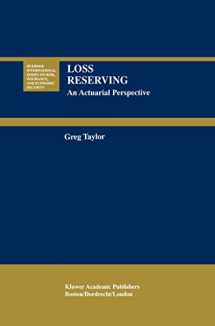
Loss Reserving: An Actuarial Perspective (Huebner International Series on Risk, Insurance and Economic Security, 21)
Book details
Summary
Description
All property and casualty insurers are required to carry out loss reserving as a statutory accounting function. Thus, loss reserving is an essential sphere of activity, and one with its own specialized body of knowledge. While few books have been devoted to the topic, the amount of published research literature on loss reserving has almost doubled in size during the last fifteen years.
Greg Taylor's book aims to provide a comprehensive, state-of-the-art treatment of loss reserving that reflects contemporary research advances to date. Divided into two parts, the book covers both the conventional techniques widely used in practice, and more specialized loss reserving techniques employing stochastic models. Part I, Deterministic Models, covers very practical issues through the abundant use of numerical examples that fully develop the techniques under consideration. Part II, Stochastic Models, begins with a chapter that sets up the additional theoretical material needed to illustrate stochastic modeling. The remaining chapters in Part II are self-contained, and thus can be approached independently of each other. A special feature of the book is the use throughout of a single real life data set to illustrate the numerical examples and new techniques presented. The data set illustrates most of the difficult situations presented in actuarial practice. This book will meet the needs for a reference work as well as for a textbook on loss reserving.


We would LOVE it if you could help us and other readers by reviewing the book
Book review



